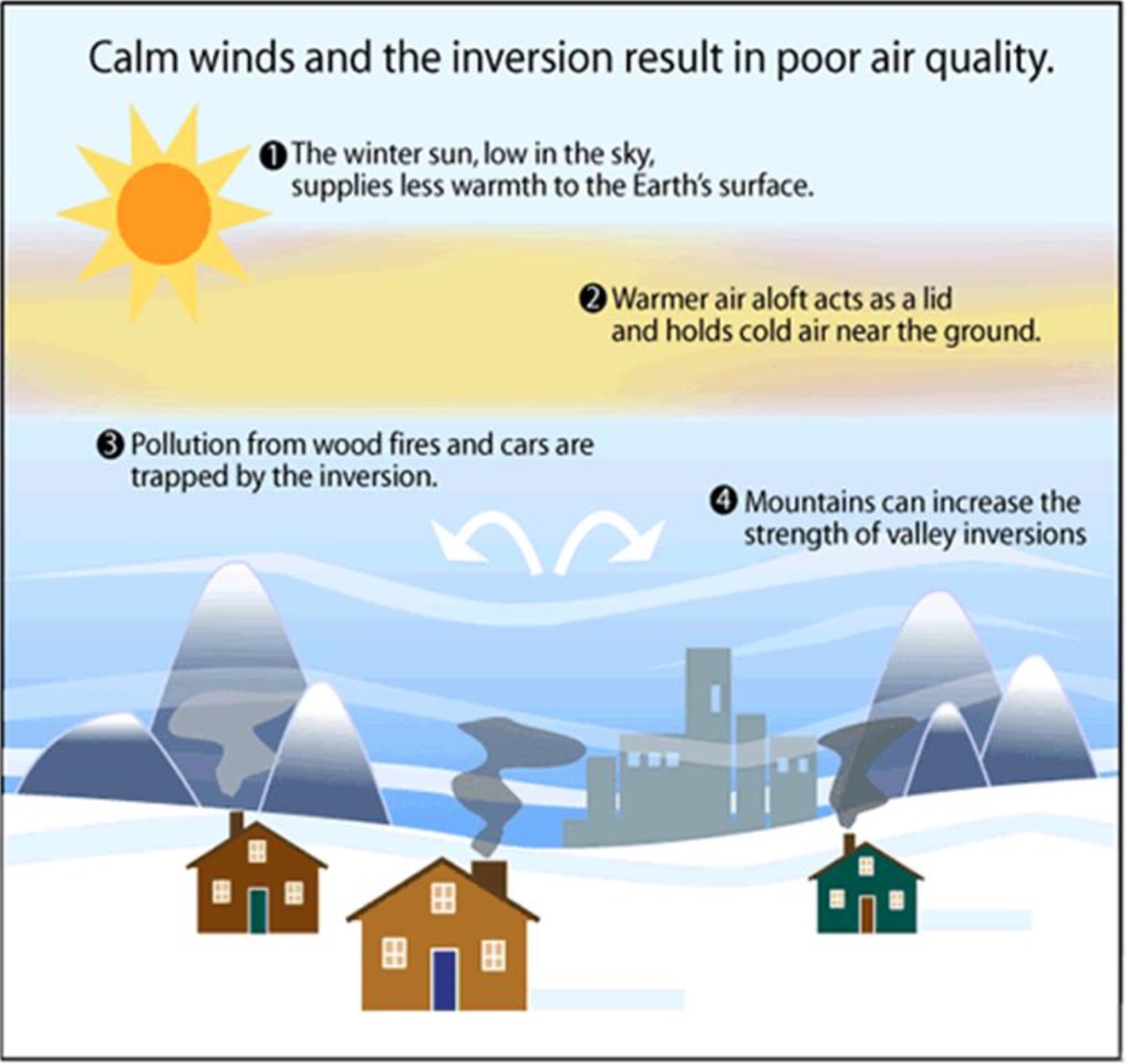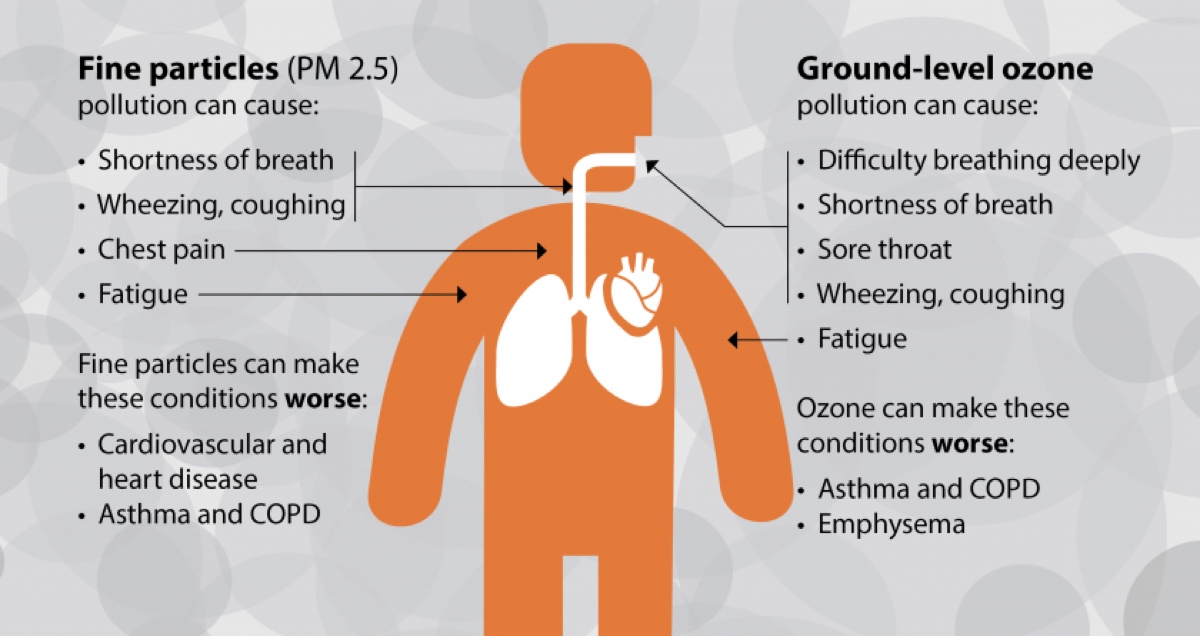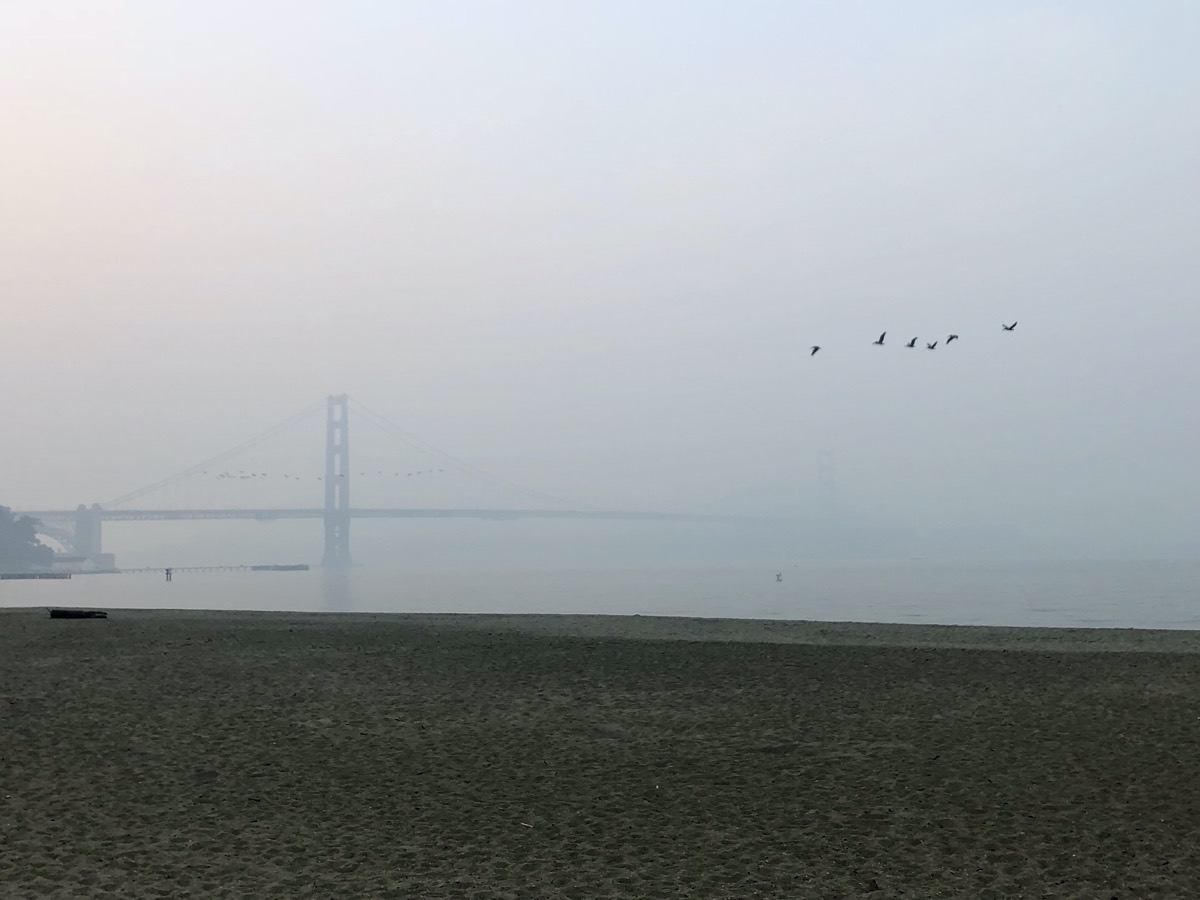Breathe in, you’re standing on a ridgeline in the San Juan Mountains of Colorado. Breathe out, you think to yourself how lucky you are to spend time in this beautiful place and among its clean, crisp air.
Maybe it’s real life, maybe it’s a postcard moment, but despite us being trail runners and ultrarunners, not everyone can be on that ridgeline. According to the United Nations, 52% of people around the world live in urban centers, and in the developed world that number approaches 78% (1). Though we possess a deep love of nature and spending time in the outdoors, these statistics mean that many of us live in cities and are thus exposed to the air pollution produced in and around them when exercising. Also, air pollution travels far and wide, and so even when we are on that remote ridgeline, we are still not immune to its negative effects on our health.
So, what is air pollution, what risks does it pose to us endurance runners, and how can we best protect ourselves from it?
What’s in Our Air?
I know you might be thinking that this isn’t an issue where you live. But just because you aren’t running alongside traffic or you don’t live in a major urban or industrial region, you can still experience decreased air quality due to other causes such as wildfire smoke or thermal inversions trapping air pollution blowing in from other places (here’s looking at you Salt Lake and Chamonix valleys on that latter factor). Let’s begin.
Air pollutants are categorized into two main types:
- Primary pollutants – Pollutants released directly from a source like smoke; and
- Secondary pollutants – Pollutants produced in the atmosphere after reactions with other natural compounds like sulfur dioxide or nitrogen oxide (2, 3).
Additionally, air pollution can be present in two forms:
- Gases
- Particles (referred to as particulate matter)

Warmer air aloft acts as a roof, trapping air pollution near the ground which is further exacerbated by mountain-valley topographic offsets. Image: Roguevalleycleanair.org/links-and-resources/inversion-layer.html
Effects of Pollutants on the Body
Particulate matter (PM) is classified into three main groups based on size, ultrafine, fine, and coarse. For perspective, all of these are smaller than the diameter of a human hair. Generally speaking, particulate matter of all three sizes are inhalable, but the smaller the PM size, the more dangerous it is as it can be inhaled deep into your lungs. Further, some PM can even get into your bloodstream, causing additional issues.
The main sources of PM include wood and fossil-fuel combustion, incense and candle burning, the oxidation of gases from automobiles and power plants, wind-blown dust, pollen, and wildfires. All of these are ultrafine and fine PM, and pose significant health risks (2).
When it comes to gases in the air, there are two main culprits, ozone and carbon monoxide. Ozone is known as a secondary pollutant (formed in the atmosphere) that unfortunately can rapidly react with the tissues of our upper-respiratory tract causing both local discomfort in our throat and having larger systemic inflammatory problems (3).
Carbon monoxide is the primary gaseous pollutant produced by incomplete fossil-fuel combustion. Common outdoor sources of carbon monoxide include car exhaust, heat- and power-generating plants, smoke from fires, and other gas-powered engines (2). The inhalation of carbon monoxide (both acutely and chronically) can have negative effects on both your health and your athletic performance because it has a high affinity for binding to hemoglobin which reduces the ability of our blood cells to carry oxygen (3). This has downstream effects like tissue hypoxia (lack of oxygen to your tissues), which can cause cellular injuries and dysfunction (2).
Research has shown that those of us with underlying pulmonary or cardiovascular medical conditions like asthma, chronic obstructive pulmonary disease (COPD), and heart or cardiovascular disease are more significantly impacted (8). I’m sure your asthmatic friends can attest to this fact during wildfire season. If you have a pulmonary condition, like asthma or COPD, your breathing is obstructed due to lung inflammation and/or constriction of the bronchi (chronically in the case of COPD and episodically in the case of asthma). Air pollution, both in gaseous or PM forms, are irritants to the surface of your lungs and bronchi, and this elicits an additional inflammatory response causing additional mucus, inflammation, and constriction, in turn making it even harder to breathe. For people with heart or cardiovascular disease, air pollution is considered similar to smoking. It contributes to hypertension (high blood pressure), placing strain on the heart in a way that’s not quite understood yet.

Here are the potential health consequences from inhaling fine particles (less than 2.5 micrometers in size) and ozone gas. Additionally, inhaling either form of air pollution can make conditions like cardiovascular disease, heart disease, asthma, and chronic obstructive pulmonary disease worse. Image: Pca.state.mn.us/air/why-you-should-care-air-quality-and-health
How Does Exercise Make This Worse?
You’ve likely been cautioned about exercising in poor air quality, and maybe you’ve shrugged it off. Let me try to explain why those warnings are meaningful.
During exercise, several physiologic changes take place that can exacerbate the negative effects of air pollution on your health. First, as you exercise, your ventilation rate and depth of breathing increases, from 12 to 20 breaths per minute at rest up to as many as 50 breaths per minute while you run. This combined with an increase in pulmonary-diffusion capacity (the rate of oxygen and carbon dioxide exchanged at your capillary bed) during exercise causes a significant increase in the total number of particles to be deposited in your airways, a 3- to 4.5-fold increase during light exercise and a 6- to 10-fold increase during high-intensity exercise (2).
Additionally, during exercise, you switch from predominantly nasal breathing to oral breathing, which bypasses the protective properties of your nasal passageway, causing more PM to be deposited in your lungs (3).
These changes combined with the temporary impaired mucociliary clearance (how the respiratory tract removes particulates), an individual exercising is predisposed to a much greater degree of air pollution compared to a person at rest.
These risks have at least temporarily concerned the medical and scientific communities enough to wonder if the positive impacts of exercise on things like cardiovascular disease was outweighed by the dangers of exercising in polluted air (4). Egads! That idea is a little scary, but the general consensus remains that while aerobic exercise is good for your health, it’s important to strategize how we exercise in and around air pollution so that we can reduce its risk to our health (And also to think about ways we can improve our air quality–yeah environmentalism!)
What Should We Do to Stay Healthy When Air Quality is Poor?
- Monitor air quality. Use websites designed to monitor and alert you when air quality is unhealthy. A reliable website is AirNow (5). It’s important to reduce exercise duration and intensity when air quality is poor.
- Time your workouts. There are generally times of day that are better and worse when it comes to air quality, particularly when thermal inversions are involved. Air quality is generally worse midday, while it’s better early in the morning or later in the evening (6).
- Use caution with indoor exercise. Although sometimes moving exercise inside on poor air-quality days is just fine, know that being inside doesn’t mean you are automatically breathing clean air. This comes down to the sophistication of filtration and ventilation systems in place at your facility, and is why oftentimes gyms will have to close their doors when air quality is too poor (6, 7). Additionally, irritants in the air in enclosed swimming pools, ice rinks, and indoor-track facilities can cause lung irritation leading to conditions like exercise induced bronchoconstriction over time. Be sure to read our previous article on this topic.
- Avoid high-pollution areas. This might not always be possible where you live. But if you can, avoid areas of high-vehicle traffic (pollutant levels are normally highest within a quarter of a mile of a road) and industrial zones. Additionally, getting up valley of a thermal inversion or geographically away from wildfire smoke reduces your risk of inhaling pollutants (6).
- Mask up. If you’re used to “dirty August,” also known as wildfire season, as we are in the western United States, you may already own an N-95 mask that has a one-way valve. This means it will help to filter the air you breathe in but not the air you breathe out. It’s also nice because you can tell pretty clearly on how well it fits because you can smell the smoke if it’s gapping anywhere. If you need to commute or exercise on low air-quality days and cannot safely move the workout inside, investing in a valved N-95 mask can make shorter, easy runs manageable.
- You’re not stuck in traffic; you are traffic. We as a community should recognize how we contribute to air pollution by driving personal vehicles to trailheads, flying to races, and buying stuff (for a sport that “only requires a pair of shoes,” we love stuff!) We can each make change to our daily routines that are better for our environment. Additionally, and on a broader scale, we can be advocates for environmental action to protect the places we love, which of course includes the air we breathe.
Call for Comments
Do you live and run in a place with air pollution? If so, how do you mitigate its impact on your overall well-being and exercise?
References
- United Nations. World urbanization prospectus the 2011 revision; 2012. https://esa.un.org/unup/pdf/WUP2011_Highlights.pdf
- Giles, L. V., & Koehle, M. S. (2014). The Health Effects of Exercising in Air Pollution.Sports Medicine, 44(2), 223-249. doi:10.1007/s40279-013-0108-z
- Giorgini, P., Rubenfire, M., Bard, R. L., Jackson, E. A., Ferri, C., & Brook, R. D. (2016). Air Pollution and Exercise.Journal of Cardiopulmonary Rehabilitation and Prevention, 36(2), 84-95. doi:10.1097/hcr.0000000000000139
- Wang, Z. (2016). Air Pollution and Exercise: A Perspective From China.Research Quarterly for Exercise and Sport,87(3), 242-244. doi:10.1080/02701367.2016.1203270
- Particulate Matter (PM) Basics. (2018, November 14). Retrieved August 12, 2020, from https://www.epa.gov/pm-pollution/particulate-matter-pm-basics
- Edward R. Laskowski, M. (2020, May 20). The truth about air pollution and exercise. Retrieved August 12, 2020, from https://www.mayoclinic.org/healthy-lifestyle/fitness/expert-answers/air-pollution-and-exercise/faq-20058563
- Oroji, B., Solgi, E., & Sadighzadeh, A. (2018). Assessment of air pollution in exercise centers and health risks.Environmental Health Engineering and Management, 5(3), 153-157. doi:10.15171/ehem.2018.21
- Kocot, K. (2020). The effect of upper respiratory allergy on acute respiratory response to ambient air pollution during physical exercise.International Journal of Occupational Medicine and Environmental Health. doi:10.13075/ijomeh.1896.01533



